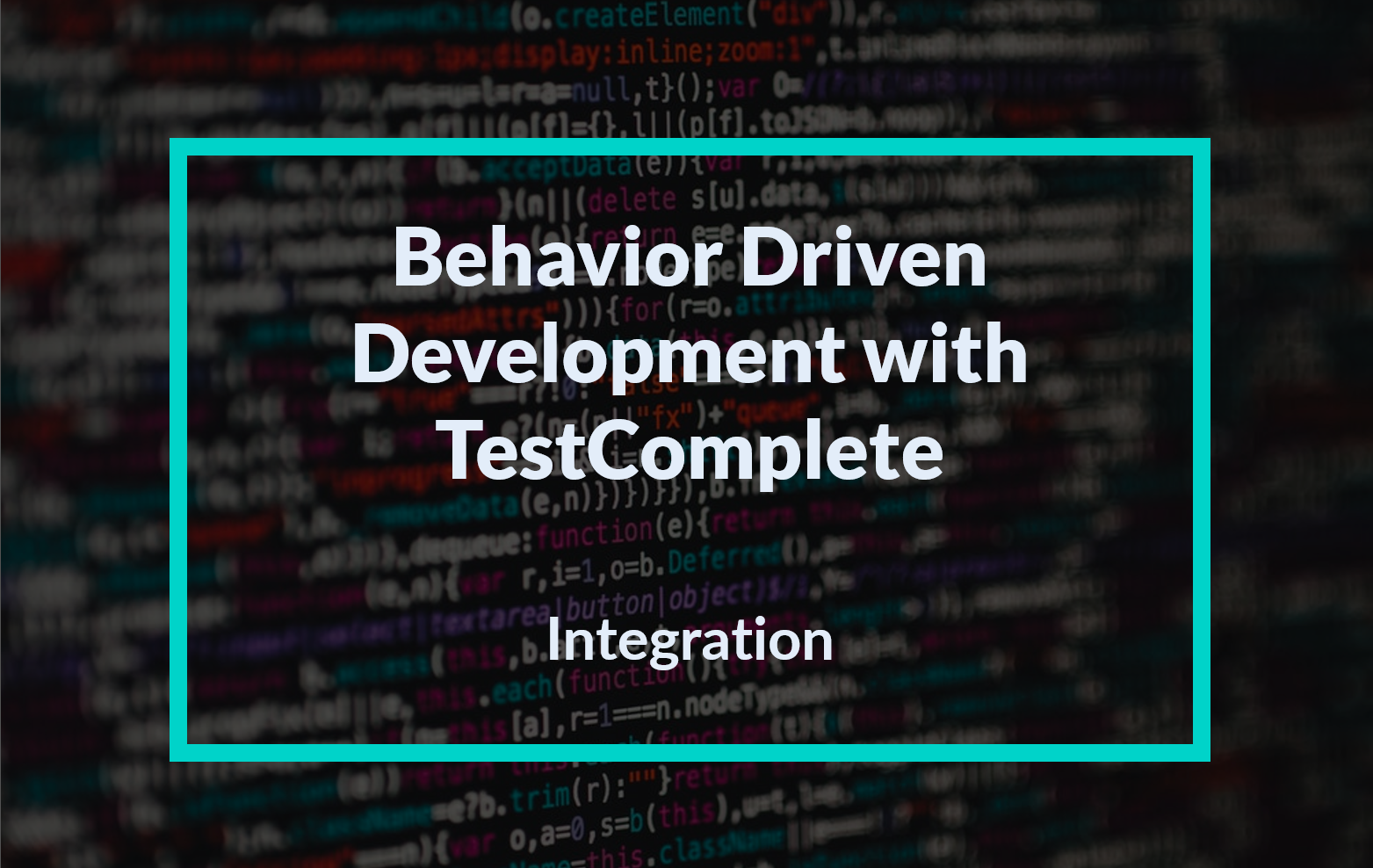Reading Time : 1 Mins
Applying Behavior Driven Development (BDD) Principles and Best practices
Minna is a content developer specializing in software testing and Robotic Process Automation (RPA). She enjoys exploring the intricacies of cutting-edge software and knits comprehensible content that resonates with the audience. PS, she is a book lover.
What is Behavior-Driven Development (BDD)?
A user’s expected behavior when interacting with an application is documented and designed into the application using the agile software development methodology known as Behavior-driven Development (BDD). BDD assists in avoiding bloat, excessive code, unnecessary features, and lack of focus by advising developers to focus solely on the desired behaviors of an app or program. This approach combines the best aspects of acceptance test-driven development (ATDD) and test-driven development (TDD).
A typical behavior-driven development project would begin with a conversation between managers, clients, and developers to understand how the product is intended to operate. When every behavior test is successful, the product satisfies all specifications and is ready to be delivered to the customer. The developers’ objectives are then set according to the behavior expectations for the product.
The Motive Behind Behavior-Driven Development
London-based technology and organizational consultant Dan North developed BDD more than ten years ago to eliminate misunderstandings between developers, testers, and business professionals. Despite its humble beginnings as a straightforward modification of test-driven development, BDD is now a full-fledged software development methodology.
The two main components of the BDD approach are frequently separated:
- In the first section, examples are written in a common language to illustrate behaviors or how users interact with the product.
- The second step involves using those examples as a foundation for automated tests. It enables developers to test user functionality and guarantees that the overall system performs as intended by the company throughout the entire project’s lifespan.
Behavior-driven development was created to bridge the gap and make it simpler for departments to work together and communicate. As a result, software development projects are managed and delivered more successfully. It ensures that projects are focused on the business’s real needs while meeting the users’ needs.
Behavior-Driven Development in Agile Development
Teams use the iterative agile development methodology for software development. Cross-functional, self-organized teams frequently adapt projects by analyzing the environment and user requirements. Here’s how behavior-driven development plays its role in Agile Development:
-
Focus on behavior and desired outcomes
To provide Built-In Quality, Behavior-Driven Development (BDD) defines (and possibly automates) tests before or as part of specifying system behavior.
-
Collaboration between stakeholders
A shared understanding of requirements between the business and the Agile Teams is created through BDD, a collaborative process. Its objectives are to improve flow, reduce rework, and guide development.
-
Writing tests in a human-readable format
BDD encourages frequent communication between the three main stakeholders. In contrast to traditional testing using code, where the QA team may or may not regularly communicate with the other stakeholders, this helps to develop the tests early on.
-
Using a Given-When-Then format for test scenarios
The Given-When-Then technique is a style guide for writing acceptance test cases for a user story. t, creators of the BDD technique, developed this approach of writing test cases for behavior-driven development.
The Need for BDD Testing Framework
Agile processes and DevOps are primarily concerned with producing products in the shortest possible time. On the other hand, organizations are wary of releasing builds that do not fully satisfy customer needs or do not align with strategic business goals. That’s why,
- BDD strengthens Agile methodology by allowing continuous end-user input to validate the development process and ensure the “right product” is deployed.
- It also enables better coordination among key stakeholders in the Software Development Process, namely the Business Team, Development Team, and Quality Assurance Team. As every team has a different perspective, which can lead to unnecessary rework, the BDD approach ensures that everyone stays on the same page and puts the need of desired behavior first.
Where does BDD is used in the test automation pyramid?
Unit tests, integration tests, user interface (UI) tests, and many more are a part of test-driven development. There are many methods for creating and managing these tests, but in recent years, Agile development teams have favoured the idea of a testing pyramid as one of the most effective. Here are the different levels of the test going from top to bottom:
- User Integration or UT Test
- System Integration Test
- Unit Test
- Manual Test
There are several levels in the test automation pyramid, and as Mr. John Ferguson Smart explained – “BDD can be implemented anywhere where a business rule is applied. A BDD scenario is a way of expressing acceptance criteria or a business rule. An example of a Business Rule in a business readable way that you agree with your customer or stakeholder. When you decide on some rules to automate, it is tested on what is called as Lowest Level of Testing, and it could be any level in the automation test pyramid.”
Steps required to implement Behavior-driven development strategy
A five-step, iterative process that includes defining the Behaviors, writing the tests, automating the tests, running the tests, and repeating is required for implementing BDD. These documented examples become assets over time, allowing your team to make rapid system changes confidently. The code reflects the documentation, which reflects everyone’s shared understanding of the problem space in this constantly evolving and shared understanding.
Step 1: Define the Behavior
The real goal here is to obtain useful, operational software for the company. The quickest way to accomplish this is to hold conversations with everyone involved in the software’s conception and delivery.
To that end, the first step is to take a pending system change, known as a user story, and discuss concrete examples of new functionalities to investigate. Use email marketing tools to poll your users and gather their suggestions before making decisions.
Step 2: Write the Tests
The next step is to automate the documentation of those examples. You can then see if there is an agreement. Once a valuable example has been identified during the discovery sessions, each example can be formulated as structured documentation. It allows everyone involved to quickly confirm that they have a common understanding of what needs to be built.
Step 3: Automate the tests
The third step is to put each documented example’s Behavior into action, beginning with the automated test to guide code development. Once the team has created it, an executable specification can be used to guide the development of the implementation. Without the system, each example can now be used as a test. This test is invalid because the described Behavior has yet to be implemented.
Step 4: Run the Tests
You can create a test set and run your project’s tests in the order you want with test items. BDD tests can be included in test items to become a regular part of your project’s test run.
Step 5: Repeat
You can run the BDD scenarios to check the Behavior of your system after defining your scenarios and putting the step definitions into practice. Ideally, the scenarios can be executed manually or automatically using a BDD testing framework.
It is easy to understand the concept of implementing Behavior driven development when we take the following example in the Given-When-Then template:

This example represents a student who has some unfinished classes and wants to request a revised class schedule. For this scenario, the student should be logged into the website. The GIVEN describes the situation, whereas WHEN describes the action which triggers the scenario. THEN describes the outcome: the customized training plan is viewable.
So, the Given-When-Then technique allows non-technical people to describe what they expect from the product or feature perfectly.
Best Practice for Implementing BDD
Here are some BDD best practices that you should follow.
- Avoid Lengthy Descriptions
Only a logical and concise title and description should be used for every feature. Long feature descriptions are frequently tedious to read and frequently turn off stakeholders. Generally, a feature should be a brief sentence summarising its scope and context.
- Choose a Single Format for Your Features
Choosing the formats, you use for writing features is another excellent feature for behavior-driven development. All feature files should adhere to the format you decide on. As a result, anyone new to the project will find it simple to understand the features and context.
- Keep the Background Short
Use a background for shared steps for each scenario in your feature file whenever possible. The background eliminates many repetitive tasks, and you can prevent duplication in feature files with proper usage. Maintain a brief background, ideally no more than four lines.
Benefits of Applying BDD in Software Testing
Acceptance tests are the first step in BDD software design. They offer a strong communication base for the development team and stakeholders. The major advantages offered by BDD in software testing are:
- Eliminate Waste
It is less likely that requirements and acceptance criteria will be misunderstood because BDD enables you to communicate requirements.
- Meet Business Objectives
Each development can be linked to specific business goals using BDD.
- BDD Test Suite
When your team adopts BDD, much like TDD, they gain confidence in the form of a test suite.
- Focus on User Needs
User needs can be met through software development thanks to the BDD methodology, which makes for happy users who are good for business.
- Easy to Integrate
The BDD codes are easy to integrate with all the automation test servers, like cucumber test execution can easily run on Jenkins, an open-source automation server supporting hundreds of plugins for building, deploying, and automating any project.
- Improve Code Quality
The most significant benefit of behavior-driven development is improving code quality, which lowers project risk and variable costs like maintenance.
- Helps Generate Code
In BDD, interactions between users and developers are used to generate code. By implication, this means that users generate and evaluate examples of software behavior.
Challenges of Applying BDD in Software Testing
The challenges of implementing BDD in software testing can be described as follows:
- BDD has resulted in excessively tightly coupled Behavior due to protracted stakeholder meetings and the need to include all key stakeholders in the BDD process.
- As Mr. John Ferguson Smart is an esteemed international speaker, consultant, author, and trainer with expertise in Agile Test Automation, BDD, and more.
- BDD requires meticulously prepared software for the Gherkin scripts to articulate the business requirements effectively. It can sometimes counter the fast pace of Agile teams working off brief specifications.
- One of the BDD principles assumes that it is difficult to know all of the requirements from the start and that we do not need to define them all in the first phase of a project, but rather that stakeholders’ knowledge will evolve throughout the project.
- BDD will necessitate experience in designing and writing automated acceptance tests for some complex applications.
Wrapping up:
Behavior Driven Development is a very clever strategy when using agile methodology. BDD offers a platform for working independently with various technologies, so it is always advised to start your development or testing with it.
By encouraging effective stakeholder collaboration, fostering clear communication, and shifting the focus from testing as an isolated activity to a shared understanding of desired behaviors, behavior-driven development (BDD) has the potential to revolutionise software testing.
Related reads:
Related Posts






















